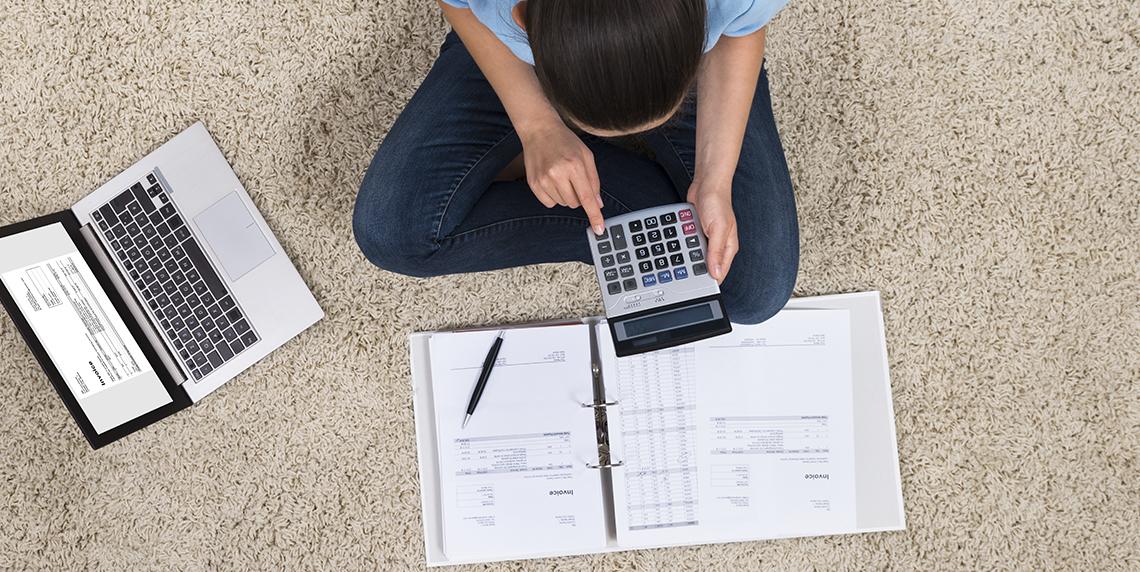Creating a realistic budget: Part 2

Welcome to part two of our series on how to craft a budget that's both realistic and effective in hitting your saving goals. Of course, this may assist you in clearing debt and improving the contents of your credit file.
In our previous article, we talked about calculating your expenses, income and saving goals. Next, let's talk about figuring out where you can cut costs and how to apply your budget.
3) Trimming costs
One important thing to remember is that you're trying to create a budget that's actually sustainable. "Inevitably, Spartan budgets that have no allowance for entertainment are doomed to fail," remarks Myvesta Foundation Spokesman Jim Tehan in a Bankrate article1.
This means using moderation and making compromises, rather than pulling the plug on your lifestyle completely.
With this in mind, let's start with looking through your flexible expenses. Chances are, there is plenty of 'excess fat' here that you can trim or simply swap with cheaper or free alternatives. Beverages like alcohol, coffee and soft drinks are huge money sinks that can be substituted out.
Water is obviously the most affordable and healthiest replacement. Even buying tea bags in bulk or grinding your own coffee can make big splashes. As you're cutting down expenditure here, the odd coffee or milkshake you reward yourself with each week will taste that much more satisfying.
Recreational activities are another area that can take up a lot of spending. According to the Australian Securities and Investment Commission2, single-person households (aged under 35) spend an average of $106 per week on recreation. These activities don't have to be halted completely. If possible, swap out a session of bowling or watching a movie with playing a game of basketball, going for a run in the park, having a board game night or other free alternatives.
Next, work through your flexible bills. Find ways to lower energy and water usage, and avoid using your car when you can. While the savings may not necessarily be drastic at a glance, the cumulative savings can play a big part in restoring the health of your credit report.
4) Executing the plan
Now, you should have a clearer picture and where you can cut costs and better plot out how much to save in each area of expense. Take your savings goal and spread it across these different fields. For instance, if you plan to save an extra $100 a week, you might decide that $20 of that total can come from dining out - which might require packing a sandwich on two days that you would normally go to your favourite brunch spot.
With your budget planned out, do your best to stick to it for another month, monitoring every expense as usual. Then, see how successful you are in hitting your goal. If you're falling short, see if there are any areas that you found easier or more difficult to reduce spending in, and adjusting your targets accordingly.
One way to make this easier is to pay in cash. As written in a paper by Drazen Prelec and George Loewenstein3, using physical money to pay for something makes it a more difficult affair, and can help curb spending. In this concept known as 'coupling', using cash helps us to better connect the experience of receiving the good or service and the monetary cost required. This makes us feel the burden of paying more heavily.
Hopefully, you now have all the basic knowledge you need to draw up that budget and, more importantly, to stick to it. When you get into the habit of moderating your expenditure, this will help you to clear up any remaining debt you have and keep your credit file looking spick and span.
Disclaimer: The information contained in this article is general in nature and does not take into account your personal objectives, financial situation or needs. Therefore, you should consider whether the information is appropriate to your circumstance before acting on it, and where appropriate, seek professional advice from a finance professional such as an adviser.
1Bank Rate, Secrets to creating a budget.
2Australian Securities and Investments Commission, Australian spending habits.
3Drazen Prelec and George Loewenstein, The Red and the Black: Mental Accounting of Savings and Debt.
Get your Equifax credit report for FREE today
Learn moreYou might also like

3 tips for paying off multiple credit card debts
Having multiple credit cards brings many benefits, but it also presents drawbacks. What happens if you start accumulating debts? Make sure you have a plan ready.

Creating a realistic budget: Part 1
Want to kick start your budgeting journey, but don't know how? Come and take a look as we break down the process into simple steps.

What you should know before applying for a home loan
Taking out a home loan is common practice for many Australians, but there is a lot that goes into getting the nod from a credit provider.
